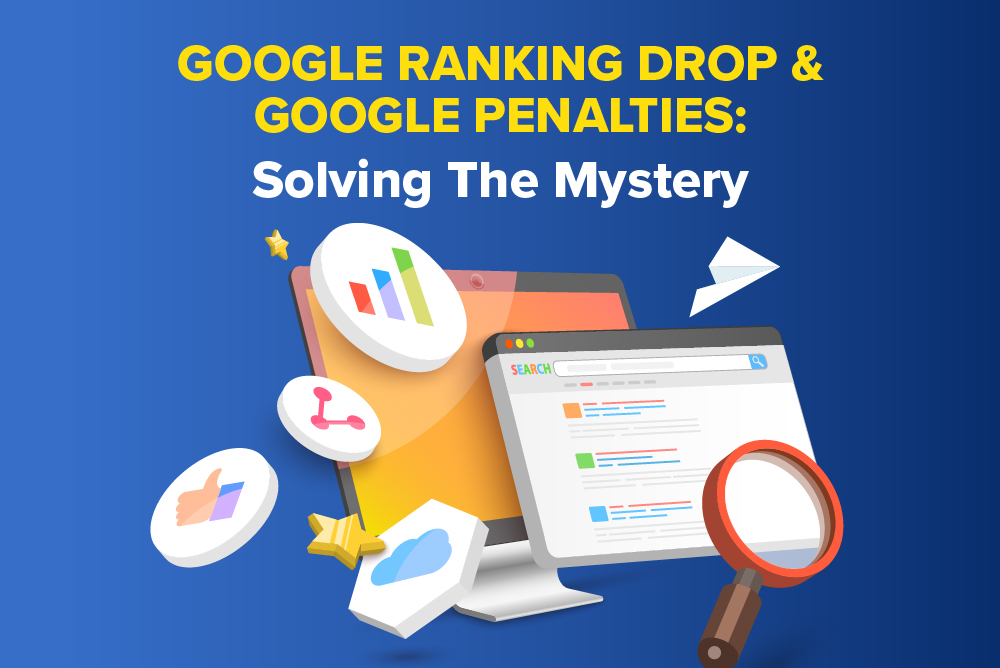In today’s competitive online landscape, succeeding in search engine results pages (SERPs) requires more than simply targeting the main keywords of your industry or business services. While this method of selecting SEO keywords can certainly help to form a strong foundation for your search engine optimisation (SEO), there are other ways to narrow down who you want in your customer base and drive more valuable traffic to your website. One such SEO strategy is utilising long-tail keywords, which can be a powerful yet often overlooked tool in your SEO arsenal.
Definition: What is meant by long-tail keywords?
Long-tail keywords are search phrases that are more specific and less competitive than main keywords. Typically three or more words in length, long-tail keywords focus on the detailed queries that potential customers might use when searching for something online. They allow your business to zero in on niche audiences that may not otherwise be reached with more general or common phrases.
For example, let’s say you own an online store that sells flower bouquets. A main keyword would be something like “flower bouquet”. This keyword usually gets a high volume of searches and would likely bring some traffic if your website is ranking – but it also brings in a lot of competition from other stores selling the same product.
On the other hand, a long-tail keyword might be “order flower bouquet online Singapore.” As you can see, the latter option offers great specificity and allows for more accurate targeting of the audience you are looking to reach.
Long-tail keyword examples
Let’s examine some more examples of keywords that do and do not fit the definition of long-tail keywords.
|
Main Keywords |
Long-Tail Keywords |
|
Cloud accounting |
Cloud accounting for small business |
|
Baby products |
Best natural baby skin care products |
|
Life insurance |
Term life insurance vs whole life insurance |
| Math tuition |
Math tuition for Secondary 1 |
Why focus on long-tail keywords?
Now that you have a grasp on the concept of long-tail keywords, you may be contemplating whether the effort invested in them will be worthwhile. The answer is yes.
Regardless of the size of your business, focusing on long-tail keywords will not only add dimension and variety to your current digital marketing strategy but can also provide the following benefits:
1. Combined search volume
For starters, the value of long-tail keyword strategy lies in their combined search volume. While individual long-tail keywords may have a lower search volume than main keywords, the combined search volume of all the long-tail keywords related to your business or product can be significant. This means that by targeting a variety of long-tail keywords, you can tap into a large and engaged audience that will be interested in your products or services.
2. Higher purchase intent
Another key benefit of long-tail keyword strategy is the intent of these keywords. As long-tail keywords are more specific, they often indicate a higher level of purchase intent from users who are further down the sales funnel. For example, someone searching for “best running shoes for plantar fasciitis” is likely closer to making a purchase than someone searching for simply “running shoes.” The precision of long-tail keywords allows you to reach customers who already have a general idea of their wants and needs and make sure they get exactly what they’re looking for when they visit your website.
3. Less competition
Additionally, there are generally fewer websites targeting long-tail keywords, which means less competition for the top spots on the SERPs. This makes it easier for your business to rank well for these keywords and increases your visibility on search engines.
Simply put, visualise the less competitive long-tail keywords as a stepping stone for your website. The potential cumulative effect of multiple, lower competition phrases can help build momentum and authority for your website, allowing it to gain traction to compete with other established websites when pursuing more sought-after keywords.
How to research and find long-tail keywords
The number of long-tail keywords available is practically limitless, but it is important to understand that not all of them are equally valuable. That’s why it is essential to conduct thorough research and find terms that match the content you want to rank for. To identify the right long-tail keywords to start with, there are some great tools out there that can streamline your research, such as Ahrefs and Semrush.
With either tool, you can simply type any keyword into the search field to access their insights. As a result, you get a dense listing of related and long-tail keywords with accompanying traffic data and indicators as to whether your site has the potential to rank well for that particular phrase.
For example, you can use Ahrefs’ Keyword Ideas under Keywords Explorer. This feature allows you to enter a main keyword related to your topic or industry, and it will generate a list of related keywords. From there, you can sort the list by search volume and eliminate the most common keywords. Then, you can look for keywords with low search volume but high relevance to your topic. These are your long-tail keywords.
At the same time, these tools also provide SEO competitor analysis that reveal keywords that your competitors are ranking for. This provides a good indication of keywords that you too should be looking at.
Alternatively, you can take a look at the estimated keyword difficulty score for each keyword, which is a metric that shows how difficult it would be to rank for that keyword. Look for keywords with a lower keyword difficulty score – this is an indicator of long-tail keywords that are less competitive and easier to rank for.
You can achieve the same results using Semrush’s Keyword Magic tool.
Ahrefs vs Semrush
When it comes down to choosing a tool for keyword research, you may find yourself torn between Ahrefs and Semrush. You may prefer Ahrefs if you are looking for keyword click data that provides deeper insights into user intent. Ahrefs can also be your go-to tool if you don’t need to manage a Google Ads campaign in your business. However, if that is something you need help with, consider Semrush as an option.
For those who are running simultaneous organic and PPC campaigns, Semrush may be more appealing. Not only does it deliver quick performance data, but it also provides invaluable information that can be used to improve your campaign.
All things considered, take advantage of the trial periods offered by both platforms so that you can really delve into their features before making your decision. That being said, as both offer excellent resources for comprehensive keyword research, many savvy companies opt to use both.
Where to put long-tail keywords
Once you have a list of relevant long-tail keywords specific to your business and industry, it is crucial to know how to use them effectively. Utilising these keywords in the right places on your website can make a significant difference in your search engine ranking and the amount of targeted traffic you can receive.
To see real results, here are a few key places where you can use long-tail keywords:
- Existing website content: Optimise your existing pages around a main keyword and supplement with relevant long-tail keywords throughout the content. This strategy allows you to integrate multiple keywords while still maintaining a strong focus on your primary keyword.
- Blogs: When writing content for blogs, tailor each piece specifically around a long-tail keyword to elevate the reach and engagement of your website.
- Page Titles and Meta Descriptions: Naturally incorporate long-tail keywords in both page titles and meta descriptions. These are two key SEO ranking factors that can impact your overall website visibility.
- Image Alt Text: Include long-tail keywords in the image alt text, as this will extend your reach even further in image searches.
Implementing keywords is only the first step towards a successful results-driven campaign. Remember to keep an eye on how well these terms perform over time. You can use either Ahrefs or Semrush to monitor your keywords. Keyword monitoring can paint a clearer picture of what works and what does not when it comes to your SEO efforts, allowing for more targeted content creation further down the line.
Without monitoring, you may miss out on crucial opportunities to stay ahead in the competitive landscape. Search engine positions are highly sought after, and failure to track means potentially giving up these positions to competitors who may be more keenly monitoring their own keywords. As such, it’s best to have a system for continual tracking to make more informed decisions when it comes to tweaking your strategy and adapting it as needed.
Start exploring long-tail keywords
Overall, setting aside some time into researching and creating an effective long-tail keyword strategy could be the ticket for your business not just competing in the online space but actually standing out from the competition. Finding more specific, long-tail keywords can give you an even greater advantage; however, this is often a time-consuming task.
For businesses looking for optimal SEO results, seek out an SEO agency specialised in keyword research and SEO to provide the expertise needed to successfully implement a long-tail keyword strategy and more. If you’re ready to harness the power of SEO for your business, it’s important to find the right partner for the job. To get started, you can check out the other types of SEO available for businesses in Singapore.







![Why Is SEO Expensive? A Realistic Review Of SEO Pricing In Singapore [2024]](https://www.firstpagedigital.sg/wp-content/uploads/2023/12/SEO-Pricing.jpg)









